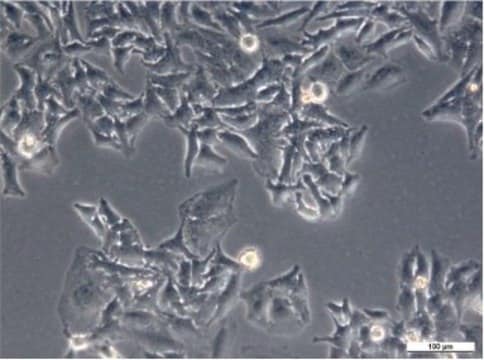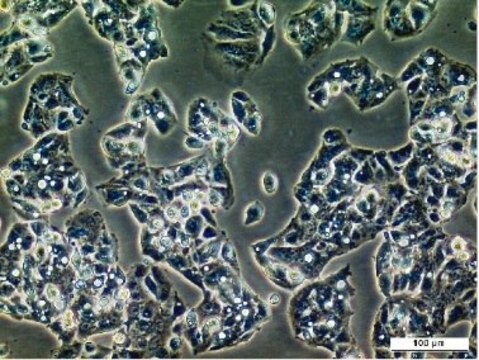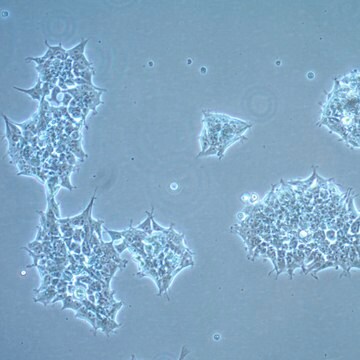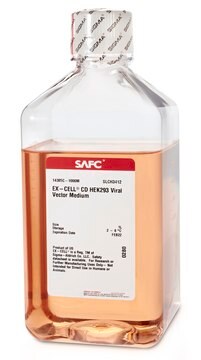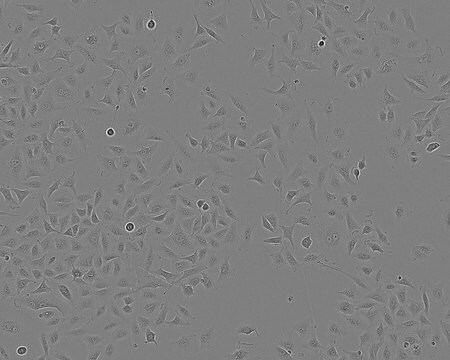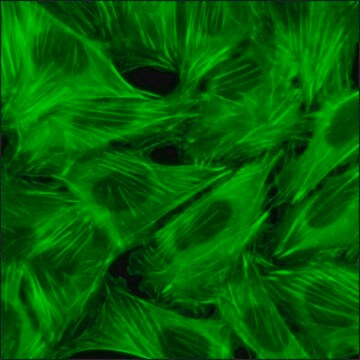293 Cell Line human
85120602, human kidney (embryonic), Epithelial
Synonym(s):
HEK-293 Cells, HEK293 Cells, Human Embryonic Kidney 293 Cells
About This Item
Recommended Products
Product Name
293 Cell Line human, from human kidney(embryonic), 85120602
biological source
human kidney (embryonic)
growth mode
Adherent
karyotype
2n 46, hypotriploid, modal no. 64
morphology
Epithelial
products
Not specified
receptors
Not specified
technique(s)
cell culture | mammalian: suitable
shipped in
dry ice
storage temp.
−196°C
Cell Line Origin
Cell Line Description
Application
- to study the effects of the Bt insecticidal toxins Cry1Ab and Cry1Ac alone, or with a glyphosate-based herbicide.
- for toxicological studies of ethoxylated adjuvants of glyphosate-based herbicides.
- for stable expression of either type 1 or type 2 11-βHSD (11 β-hydroxysteroid dehydrogenase) after transfection with 11-βHSD cDNA.
- as a host to transfect TLR4 cDNA (HEK-TLR4) to express TLR4 mRNA and protein and induce IL-8 (interleukin-8) promoter activity in response to NE (neutrophil elastase).
DNA Profile
CSF1PO: 11,12
D13S317: 12,14
D16S539: 9,13
D5S818: 8,9
D7S820: 11,12
THO1: 7,9.3
TPOX: 11
vWA: 16,19
Culture Medium
Subculture Routine
Other Notes
Choose from one of the most recent versions:
Certificates of Analysis (COA)
Sorry, we don't have COAs for this product available online at this time.
If you need assistance, please contact Customer Support.
Already Own This Product?
Find documentation for the products that you have recently purchased in the Document Library.
Articles
Eukaryotic cell lines aid in complex post-translational modifications and folding of recombinant proteins. Find suitable recombinant protein production cell lines at sigmaaldrich.com
DNA, RNA, cDNA derived from ECACC mammalian cell lines allow screening for genes or expression patterns to identify lines most suitable for specific research.
Our team of scientists has experience in all areas of research including Life Science, Material Science, Chemical Synthesis, Chromatography, Analytical and many others.
Contact Technical Service
